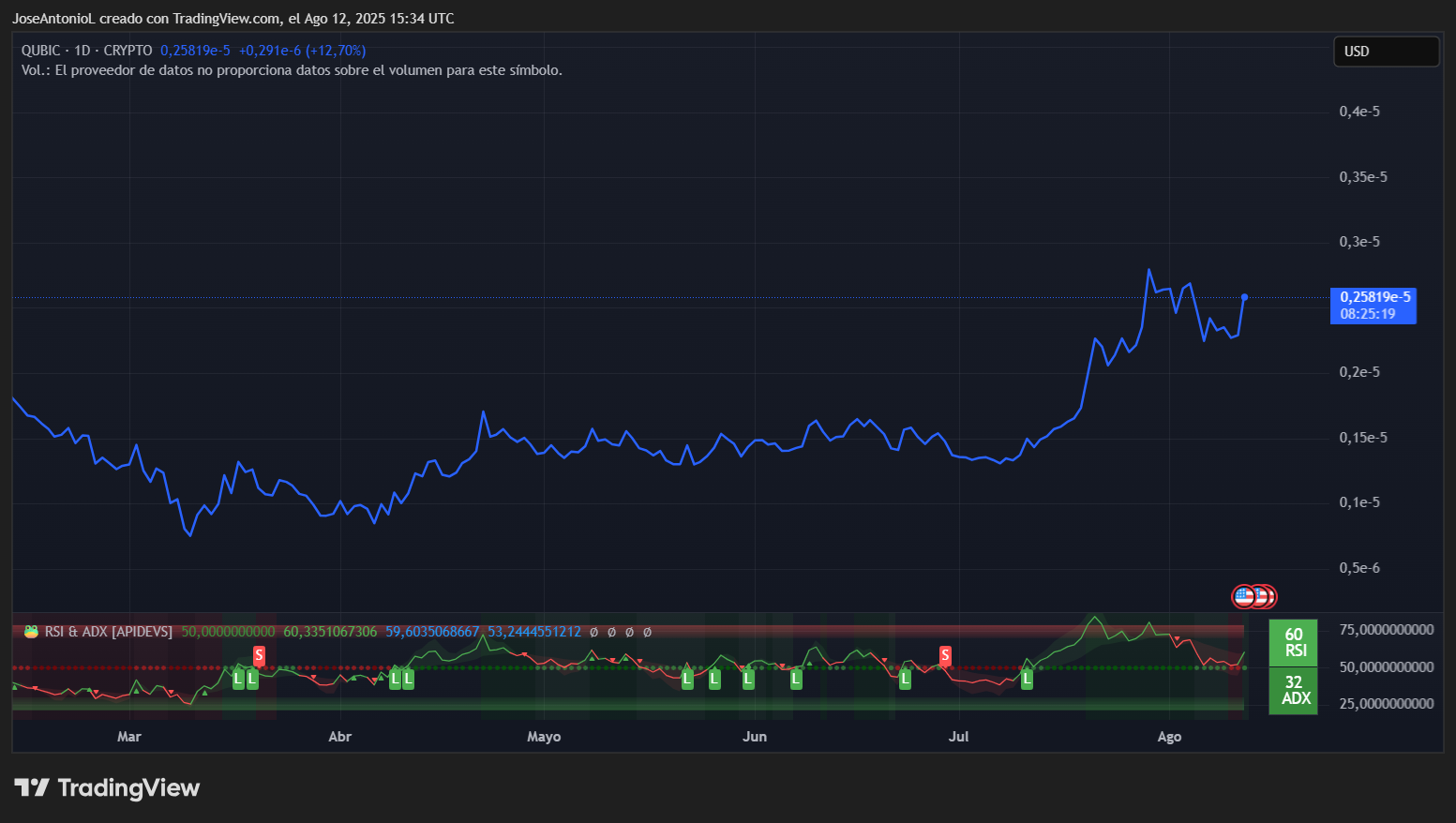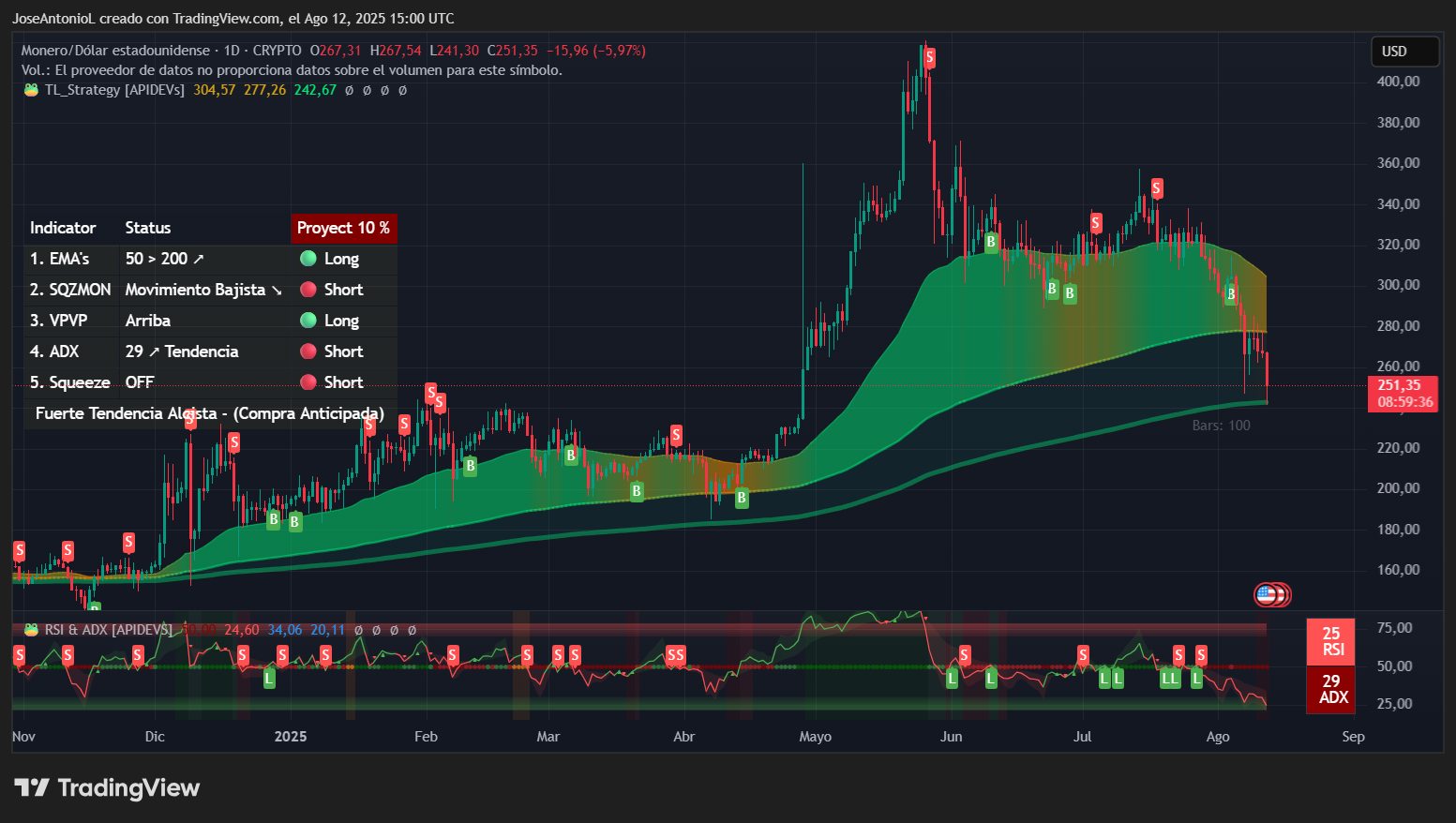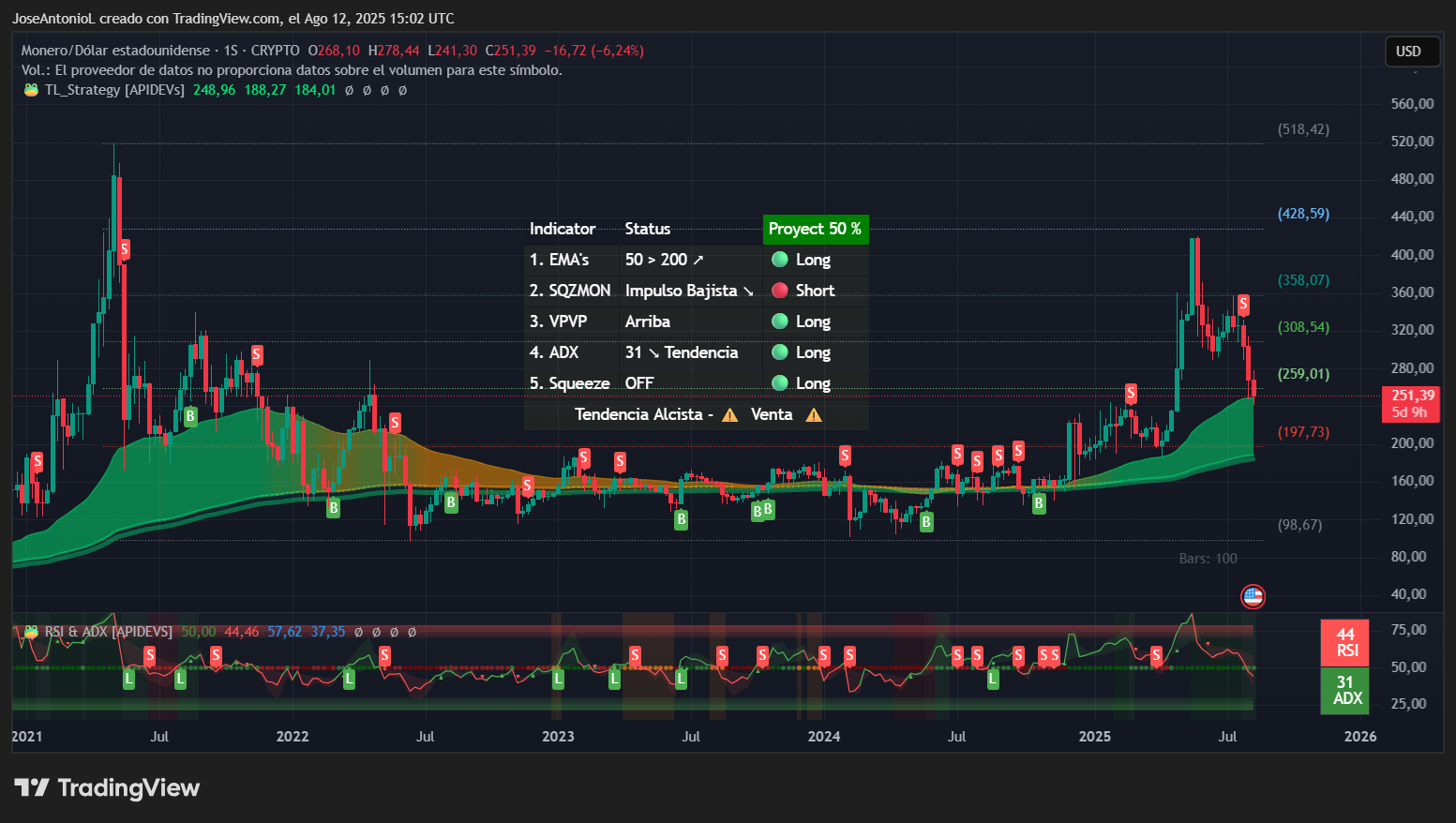The majority of the crypto market may be rejoicing today, but the king of privacy coins is in panic mode: Monero, which trades as XMR, is currently the third-worst performer among the top 100 cryptocurrencies by market cap, and it’s down almost 25% in the last month.
For context, other privacy coins remain bullish: Zcash is up 2% today, Dash is flat after a 10% spike in the week, and privacy-focused layer-2 tokens like Starknet and ZKSync spiked 5.3% and 4.4% today, respectively.
XMR, meanwhile, plunged 15.96% over 24 hours to $251.35. So why is Monero nuking?
The selloff is the culmination of weeks of mounting pressure as rival blockchain project Qubic steadily accumulated XMR mining power, ultimately claiming majority control of the Monero network's hashrate. That would mean a rival chain is effectively in control of Monero, so you can imagine the level of uncertainty XMR holders might be feeling.
This led to a heavy price increase for Qubic, and a corresponding price crash for Monero.

Qubic price data. Image: TradingView
Trading volume on XMR surged dramatically as Monero investors rushed for the exits, with the token breaking through multiple support levels that it had held for months.
At its current $253 per coin, the decline extends XMR's weekly losses to over 25%, erasing gains built up during the summer rally and pushing the privacy coin to its lowest levels since May. This represents one of the most severe single-day drops for Monero in 2025, comparable only to broader market corrections during periods of intense regulatory uncertainty.
Monero 51% attack: Real threat or marketing stunt?
The core of Monero's crisis lies in an unprecedented situation: Qubic, a project led by former IOTA co-founder Sergey Ivancheglo, says it has secured more than 51% of Monero's global hashrate, a milestone that, if true, gives it the ability to reorganize blocks, censor transactions, and attempt double-spends on the privacy-focused blockchain.
The concept of a 51% attack represents one of the most fundamental threats to any proof-of-work blockchain network. When a single entity or coordinated group controls the majority of a network's mining power—specifically more than 50% of the total hashrate—they gain the ability to manipulate the blockchain in several damaging ways.
In other words, it renders the blockchain useless because the entity in control can execute whatever it wants—and there is no consensus because the attacker’s decisions become the de-facto consensus majority.
For Monero, which has built its reputation on providing untraceable transactions and robust privacy protections, such an attack would be particularly devastating.
The network's RandomX algorithm was specifically designed to resist ASIC mining and maintain decentralization by favoring CPU and GPU mining. However, Qubic uses a novel "useful proof-of-work,” or uPoW, system that has been incentivizing Monero CPU mining to fuel its own token economy. By converting mined XMR into USDT stablecoins to buy and burn QUBIC tokens, Qubic aims to create a deflationary model for its own coin.
Rather than launching a traditional attack for profit or disruption, the project has created economic incentives that naturally draw miners away from distributed pools toward their centralized operation. This represents a new category of attack that doesn't rely on malicious intent but superior economic incentives.
However, the cryptocurrency community remains divided on whether this constitutes a genuine attack or an elaborate demonstration. Countering the Monero attack allegation, Qubic's founder, Sergey Ivancheglo, said, this wasn't about taking Monero down. Instead, he says the move helped Monero prepare for future threats, especially from powerful organizations that might try to harm it.
The evidence of network disruption appears concrete. The Monero Consensus Status dashboard shows Monero experienced 60 orphaned blocks (valid blocks that were rejected) in the last 720 blocks, indicating significant blockchain instability. Ledger CTO Charles Guillemet warned on X earlier today that Monero "appears to be in the midst of a successful 51% attack," citing signs of a major chain reorganization, lending credibility to the most serious interpretation of the situation.
XMR price: Bears take control
So what does this all mean if you’re a Monero true believer or XMR bagholder?
The technical picture for Monero paints an unambiguously bearish scenario across multiple timeframes. Current price action at $251.35 appears to be a decisive break below critical support levels, with momentum indicators confirming that selling pressure is likely to continue. The coin is down 15% in the last week and over 6% down in the last 24 hours.
The price has attempted to break below the $250 twice. The first time on August 7 was rejected, the second one today is in play and fueled by the ongoing 51% attack FUD. If the support holds strong, traders may view this as a good price point to accumulate and wait for a bounce. If it goes below that level, then brace yourselves.

Monero (XMR) price data. Image: TradingView
The Relative Strength Index, or RSI, for Monero stands at a concerning 25 points, placing XMR firmly in oversold territory, confirming the grim mood among holders. RSI measures the speed and magnitude of price changes on a scale from 0 to 100, where readings below 30 typically indicate that an asset has been sold down too aggressively and may be due for a bounce. However, during periods of fundamental uncertainty like a potential network attack, oversold readings can persist much longer than normal as fear-driven selling overwhelms technical considerations.
Even more telling is the Average Directional Index, or ADX. Monero’s ADX is at 29, just above the crucial 25 threshold. The ADX measures trend strength regardless of direction, with readings above 25 confirming that a strong trend is in place. At 29 points and rising, this indicator suggests that the current downward momentum has some power behind it and is likely to continue.
The exponential moving average configuration shows how damaging panic episodes can be. Exponential moving averages take the average price of an asset over a given period of time. And when looking strictly at XMR’s EMAs, you’d think the coin was forming a bullish pattern.
But the price of XMR is trading well below both its 50-day EMA, which currently sits around $277, and appears to be approaching a test of its 50-week EMA, the average price of XMR over more or less the full year.
So, for those zooming out and looking at the bigger picture, things would still appear bullish for Monero. But the fundamentals play a key role. If the 51% attack is successful, then the coin loses a lot of fundamental value. If there is a fork or the network proves it can defeat the attack, then the natural bullish price momentum may continue.
In the weekly charts, the coin is currently testing a key support, and it seems to be holding strong. If it breaks below $259, a longer timeframe sees prices crashing below $200. If it refutes the FUD scenario, a spike over $300 is logical in the medium term. For position traders willing to wait weeks and months before closing a position, this zone may be strategic for either long or short plays.

Monero (XMR) price data. Image: TradingView
Key levels to watch for Swing Traders:
- Immediate support: $240 (psychological level)
- Strong support: $220-225 (major technical zone)
- Immediate resistance: $270 (broken support turned resistance)
- Strong resistance: $290-300 (50-day EMA and psychological barrier)
The views and opinions expressed by the author are for informational purposes only and do not constitute financial, investment, or other advice.
免责声明:本文章仅代表作者个人观点,不代表本平台的立场和观点。本文章仅供信息分享,不构成对任何人的任何投资建议。用户与作者之间的任何争议,与本平台无关。如网页中刊载的文章或图片涉及侵权,请提供相关的权利证明和身份证明发送邮件到support@aicoin.com,本平台相关工作人员将会进行核查。




